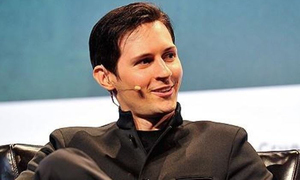Some of us are old enough to remember how “mutually assured destruction,” or MAD, was supposed to ensure the general peace.
Millions have grown up referring to the scary “doomsday clock” of atomic scientists that ticks closer to a midnight nuclear holocaust in times of crisis.
So the planet is not naive about the dangers of its 13,000 to 15,000 nuclear weapons. In 1961, the Soviet Union terrified the world when it exploded history’s greatest nuke - the 50-megaton “Tsar Bomba.” The Cuban Missile Crisis a year later brought the United States and the Soviet Union closer to a nuclear exchange than at any time since.
In 1983, then-President Ronald Reagan countered the Soviet nuclear-tipped SS-20 ballistic missiles aimed at Europe by stationing American Pershing II missiles in Germany.
In response, for a few months Hollywood and the media began talking about a “nuclear winter” to follow the supposedly reckless war talk of the American cowboy president. But what followed was a series of superpower missile negotiations that lowered the tensions of the waning Cold War.
Every time a nondemocratic nation joins the nuclear club ㅡ Pakistan in the mid-1980s, North Korea in 2006 ㅡ the chances of a nuclear exchange supposedly increase.
But we forget that a number of powerful European and Asian states could easily go nuclear at any time within months. Instead, influential, wealthy nations like Australia, Germany, Japan and South Korea rely on either NATO or the huge nuclear arsenal of the U.S. to deter their nuclear enemies. If that assurance is ever in doubt, then at any moment they may decide to go nuclear themselves.
우크라이나 전쟁, 핵 논의 재개시켰다(1)
빅터 데이비스 핸슨(후버연구소 역사학자)
우리 중 일부는 ‘상호확증파괴’(MAD)가 전반적 평화를 보장할 것이라는 가정이 어떻게 성립되었는지 기억할 정도로 나이가 많다. 많은 사람들은, 위기 때 벌어질 핵 대참사의 순간을 향해 시계 초침이 움직이는 원자과학자들의 무서운 ‘지구 종말 시계’를 언급하면서 성장했다.
따라서 우리 행성은 보유 중인 1만3000∼1만5000기의 핵무기의 위험에 무지하지 않다. 1961년 소련은 역사상 최대 핵무기였던 50메가톤의 ‘차르 봄바’를 터뜨려 세계를 경악시켰다. 1년 뒤 쿠바 미사일 위기로 미국과 소련은 그 어느 때보다 쌍방 핵 공격에 다가갔다.
1983년 당시 대통령이었던 로널드 레이건은 미국의 퍼싱2 미사일을 독일에 배치함으로써 유럽을 겨냥한 소련의 핵탄두 장착 SS-20 탄도미사일에 맞섰다.
몇 달 뒤 그에 대한 반응으로 할리우드와 언론계는 미국 카우보이 대통령의 무분별한 것으로 여겨지는 전쟁 논의에 뒤따를 ‘핵겨울’에 관해 이야기하기 시작했다. 그러나 정작 뒤를 따른 것은 초강대국 간의 잇단 미사일 협상이었고, 이 협상은 시들던 냉전의 긴장을 낮추었다.
1980년대 중반의 파키스탄과 2006년의 북한이 그랬던 것처럼 비민주적인 나라가 핵클럽에 가입할 때마다 쌍방 핵 공격의 가능성은 늘어나는 것으로 여겨졌다.
그러나 우리는 유럽과 아시아의 여러 강대국들이 몇 개월 안에 쉽사리 핵으로 무장할 수 있다는 사실을 잊고 있다. 오스트레일리아, 독일, 일본, 한국 같은 영향력 있고 부유한 나라들은 핵무장을 하는 대신 나토(북대서양조약기구) 혹은 미국이 대규모로 보유한 핵무기에 의존해 그들의 핵무장한 적들을 저지하고 있다. 만약 그런 보장이 의심스러워질 경우 그런 나라들은 금세 자체 핵무장을 결정할 것이다.
역주=오성환 외신전문위원 suhwo@segye.com
△holocaust: 대파괴, 대참사 △at any time since - : ∼ 이래 그 어느 때보다 △supposedly: 추정 상, 아마 △nuclear exchange: 쌍방 핵 공격
Copyright ⓒ 세계일보. 무단 전재 및 재배포 금지
![[설왕설래] 휴대폰 개통 안면인증](http://img.segye.com/content/image/2025/12/24/128/20251224514544.jpg
)
![[세계포럼] 금융지주 ‘깜깜이’ 연임 해소하려면](http://img.segye.com/content/image/2025/12/24/128/20251224514519.jpg
)
![[세계타워] 속도 전쟁의 시대, 한국만 시계를 본다](http://img.segye.com/content/image/2025/12/24/128/20251224514427.jpg
)
![[한국에살며] ‘지도원’ 없이 살아가는 중국인 유학생들](http://img.segye.com/content/image/2025/12/24/128/20251224514493.jpg
)








